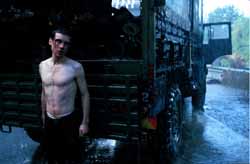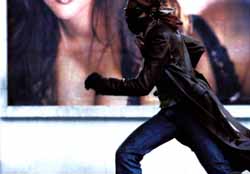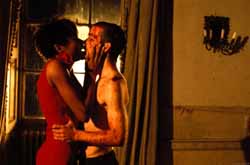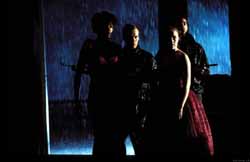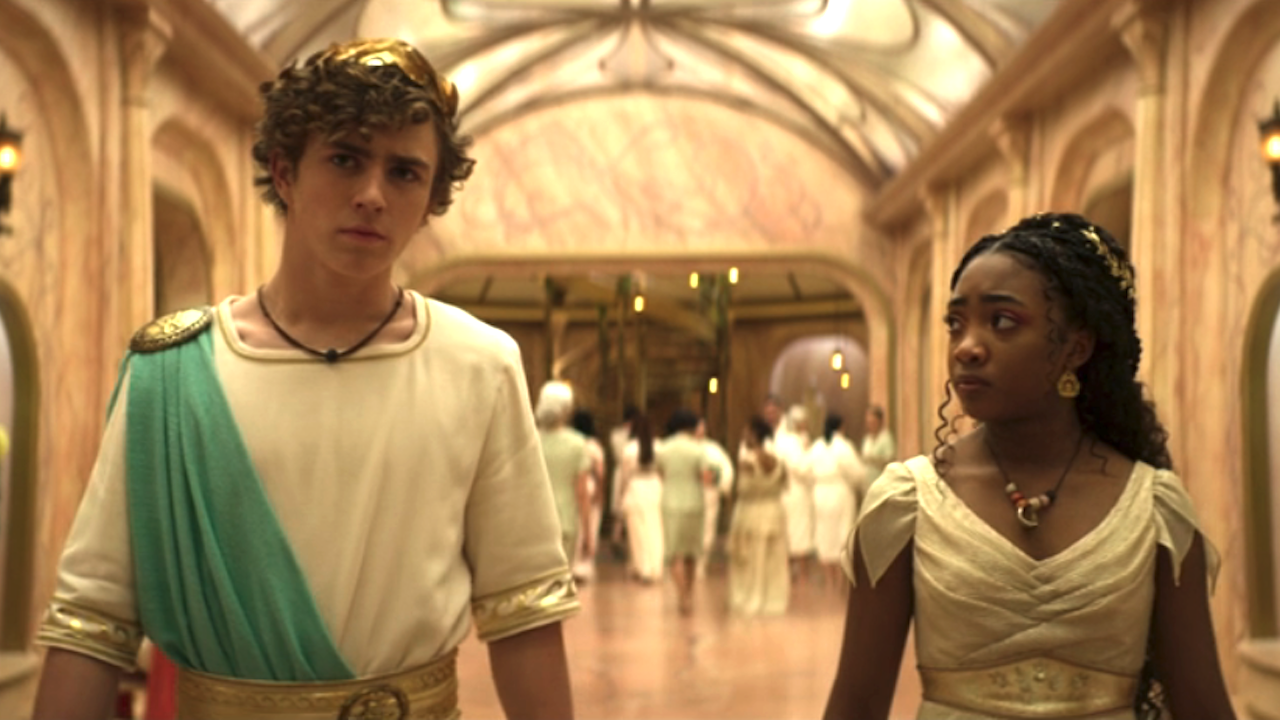If any current genre could be described as stagnated it would certainly be horror. Few horror movies of recent years have dared to vary from the painfully formulaic teen slasher mould. Leave it to the UK’s most under-rated director to dare to be different.
While Guy “Mr Madonna” Ritchie hogs all the Hollywood limelight and receives more credit than this reviewer believes he is due, another British director has, for the most part, slipped under the US market radar with his bold and uncompromising movies. Danny Boyle, director of Trainspotting - one of the greatest British movies of the last 15 years - has teamed up once more with writer of The Beach, Alex Garland, to try and breathe life into a tired old dog.
28 Days Later begins with animal rights activists breaking into a research laboratory to free some chimps being used for research. Against the protestations of one of the scientists, who warns the chimps are contagious, they set one free, an action which has disastrous consequences. The chimp was infected with Rage, a virus which within 20 seconds of infection sends it’s victims into a demented zombie-like bloodlust and is passed through bodily fluid like blood and saliva.
Fast forward twenty-eight days and cycle courier Jim (Murphy) wakes from a coma to find himself in a deserted hospital, and on closer inspection, a seemly deserted London. Seeking refuge in a church he finds it scattered with seemingly dead bodies. Some, however, are less dead than others and after a near fatal encounter he is rescued by Mike (Noah Huntley) and Selena (Harris), who make Jim aware of the world he’s just woken up to. Rage has ravaged the country leaving most of it’s population either dead or one of the bloodthirsty “Infected” with only handfuls of survivors scattered around. Soon teaming up with middle-aged family man Frank (Gleeson) and his young daughter Hannah (Burns), the team set out in search of a group of soldiers broadcasting a radio message offering refuge and “salvation” from the Infected. But in a land where survival has become paramount, not all may be as it seems.
Danny Boyle has gone back to his short film roots and in a typically audacious move shot the entire movie on Digital Video rather than on standard film. The result is a much more raw and natural look than the terminally polished soft-focus Hollywood fare. This helps lend the movie a sense of almost camcorder-like realism that celluloid cannot replicate. That’s not to say this is some glorified home movie. The stark deserted streets and motorways take on even more impact with this at times CCTV-like voyeuristic view. Boyle’s directing, however, still leaves it with a cinematic feel that most other purely DV projects lack.
This movie has rather unfairly been labelled “a zombie movie” by the media and critics, which has left some hardcore audiences cold to this feature. What some may see at first as a set up to a Dawn Of The Dead style fight for survival in a confined urban environment takes several turns completely away from zombie film at times; from Mad Max style post-apocalyptic road movie to cat-and-mouse thriller.
Many are expecting a Romero/Savini style gore fest but the truth is there is very little in the way of visceral thrills. Where Romero would emphasise the gruesomeness of a zombie attack, Boyle instead focuses on the speed and ferocity of attacks by both Infected and the human survivors, emphasised in one scene where a survivor is brutally dispatched by a colleague after being suspected of being contaminated. This is a good offset to the film’s main underlying concerns - the effects of the situation on the characters and on society as a whole and the question of where the line between Rage the virus and simple human nature falls. This is not just 90 minutes of Resident Evil, “Action-Jackson” style survival horror. While the Infected feature throughout the whole film they always play second fiddle to the human character interaction. The movie is also, thankfully, not without humour, the best joke being a topical visual gag in a group trip to an abandoned supermarket.
Your Daily Blend of Entertainment News
While an impressive and commendable variation on the zombie theme the movie is not perfect. Much like one of last year’s films, Reign Of Fire, it doesn’t so much promise more than it delivers but delivers something different from what you may have been lead to expect. But, unlike Reign Of Fire, what it delivers isn’t ham acting in place of helicopter gunships facing down dragons, it offers a sometimes all too realistic view of survival in the worst possible scenario. Boyle’s direction is good, building up tension nicely when danger looms, and effectively uses fast-cut edits to make a point rather than to jazz-up poor direction. All the actors play their parts competently, with Christopher Eccleston’s ulterior-motivated army Major and Murphy’s confused courier being the only real stand outs. Garland’s script, for all it’s “genre-bursting” freshness, can’t help but occasionally succumb to some of the more unavoidable clichés that a 100 minute horror film imposes, especially in the final act.
But any gripes aside, it’s refreshing to see a British film getting wider audience in a time when the Hollywood blockbuster train is back in overdrive. And 28 Days Later can stand alone, if for no other reason, in that for once it offers something more than just a bunch of dumb teens from some network TV shows with questionable acting skills being stalked by someone in a rubber mask. Something different from the endless alt-rock soundtracked, fright-chord filled, PG-13 rated crud. A hark back to the days when directors like Hooper Ferrera made good horror films using basic techniques. In short, it is a flawed gem in a mine filled with worthless rock.
